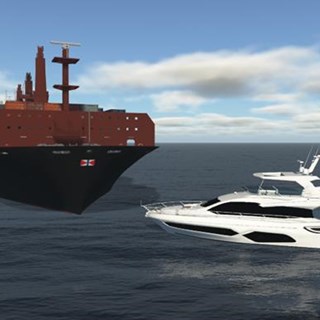
Innovative modelling approach supports Australian defence programs
A discrete event modelling and simulation approach allows organisations to test multiple scenarios within systems, processes, and operations.
2 February 2021
The Australian Defence Force has embarked on an ambitious capital program to provide our nation with future generations of warfighting capability. The Continuous Naval Shipbuilding program and the Land Combat Vehicle programs headline the ambitions for generating sustainable sovereign capacity.
Through lessons learnt from previous programs, including the Collins Class submarines and ANZAC Frigates, Australia has taken a deliberate and integrated approach to strategic capability investment and industry planning to guide the delivery of future capability.
There is a demonstrated intent to ensure that the programs deliver more than just capable platforms and that the fundamental inputs to capability are integrated from the start of the programs. The approach is exemplified by:
Development of Sovereign Capability through a deliberate and planned implementation of Australian Industry Capability
Developing procurement strategies that support a sustainable and enduring industrial base
Substantive decisions are now being made that will shape capability delivery for decades. Each program on its own is challenging and complex, yet many of the decisions around facilities, infrastructure, workforce, and supply chains require an enterprise approach. The complexity of systems, processes and concepts provides the opportunity for decision support tools to support choices that will shape the next generation of capability.
The Australian Defence enterprise embraces modelling and simulation to support sound capability, acquisition, and system decision-making.
Examples of different decision support applications of Discrete Event Simulation are:
Ensuring that the timing of infrastructure implementation does not impact the project or program schedule
Analyse Vessel Usage Upkeep Cycles to optimise operational availability. Achieving two extra operating sea days annually per platform equates to two additional years of active availability over a class lifecycle.
Test armoured fighting vehicle geographic disposition and transport options to ensure cost-effective availability meets the training and operational requirements.
Why use Discrete Event Simulation
Discrete Event Simulation models a system's operation driven by activities occurring at discrete instants in time (an event). It models and simulates the performance of real-life processes, facilities or systems and allows “what if” scenarios for increasing size and complexity problems to be tested and compared. The ability to focus on events enables the simulation of an entire process or capability lifecycle. Minor improvements can equate to substantial savings across an enterprise’s capability lifecycle.
Uncertainty and risk can be incorporated into the model, thoroughly examining the system. The modelling is easily verified, and results are presented quantitatively but importantly visualise the simulation, supporting stakeholder understanding and trust.
Developing a model provides the customer with a different and occasionally new perspective on existing processes and systems. The initial steps require a thorough and complete understanding of the existing or proposed system or process and force both the client and the modelling team to examine each step critically. The modelling process requires a collaborative approach.
Typical steps in developing the model and subsequent simulation and analysis are as follows:
Customer objectives and requirements are defined.
Data collection and analysis to accurately represent the system or process being modelled.
Model development is usually based on the existing system.
The model is verified and validated.
Options and scenarios are simulated.
Results are analysed, and recommendations are developed.
The initial steps are essential to maximising the effectiveness of the simulation and need an engaged and knowledgeable customer to define the objectives. The customer may deliver the model and perform the simulation themselves, especially when the underlying data is confidential.

Salty has over three decades of Defence and Security experience, including over 20-years with the Royal Australian Navy and employment with global defence companies, including Penske, Nova Systems and Thyssenkrupp.
Salty is based in Adelaide, Australia, but manages the delivery of multiple programs of work for our clients across Australia, New Zealand and Pacific island nations.

Will Roberts
At BMT, we believe simulation is a critical enabler in overcoming these hurdles—de-risking development, accelerating innovation, and building confidence across the entire lifecycle of autonomous systems.

N/A
Get ready to dive deep into maritime autonomy as we bring you technical experts, insightful opinions, and unmissable discussions.

Dr Thomas Beard
Episode 3 of IMarEST’s Ship Energy & Environment podcast series, addressed the ‘Realities and Challenges of Alternative Marine Fuels. Dr Thomas Beard, Clean Shipping Lead explores the practical side of the 'big four' alternative fuels.

Jake Rigby
We explore the core elements of the support framework required to ensure Persistent Operational Deployable Systems (PODS) can thrive.